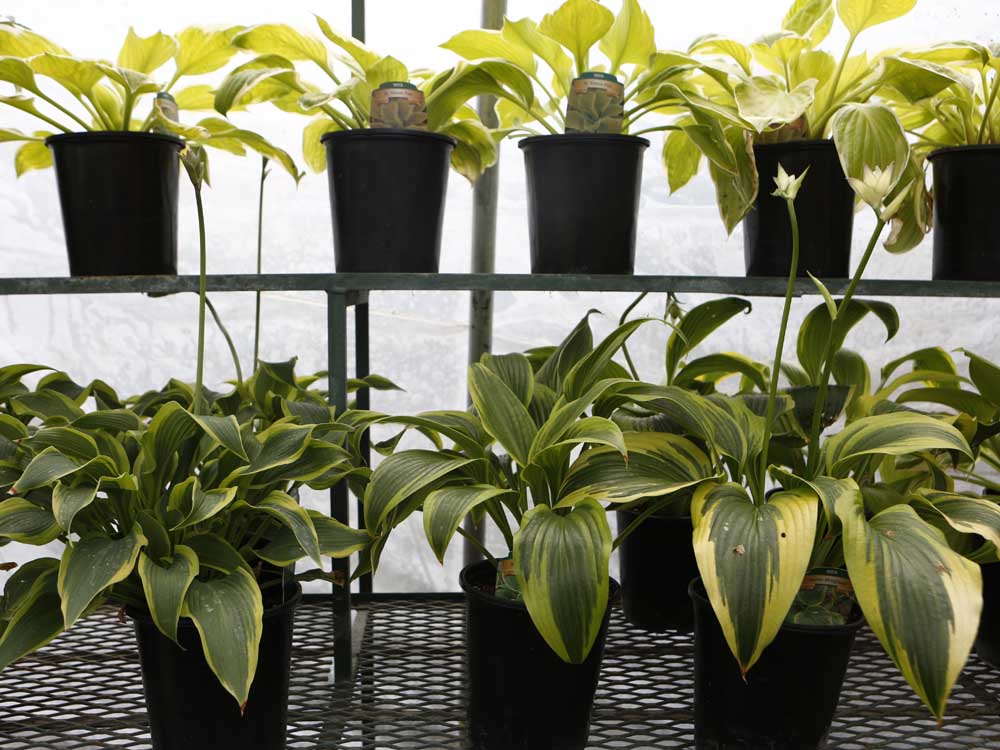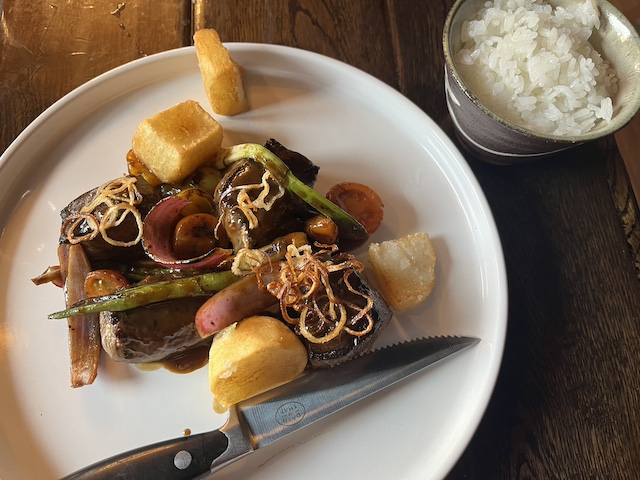Hostas work in the High Desert
Published 12:00 am Tuesday, June 28, 2016

- Jarod Opperman / The BulletinVarious types of hostas at Cascade Garden Center & Nursery in Bend.
With their rich color and lush foliage, shade-loving hostas provide a densely mounded form and a tropical fashion normally nonexistent in High Desert landscapes.
Frost-hardy and resilient, these herbaceous perennials come back vigorously from winter dormancy, year after year proving to be as easy to grow as they are impressive.
With lily-like flowers that erupt atop an upright, sturdy scape, the creamy white, lavender or fuscia flowers of a hosta stand stately and tall above their leaf mound, creating an exotic, late-summer exhibit — although brief. It’s not their flowers, however, that have made them so popular.
Grown mainly for their gorgeous foliage, it’s the sweeping range of plant size, color and leaf shape that makes hostas so versatile, and it’s the striking combinations of these characteristics that make them so pleasing as landscape plants.
Nearly neon to almost blue, yellow to chartreuse to teal, hostas are colorful standouts nearly anywhere they’re planted. From the broad, pointed leaves of “Blue Angel” and the cupped, heart-shaped leaves of “Blue Mouse Ears,” to the silly and frilly grass-like leaves of “Curly Fries,” sometimes it’s not the color, but the scale and texture of the foliage that adds the drama.
Variegated varieties have even fancier foliage. Bi-colored “Striptease” has green margins with golden centers, while “Patriot” has a sharper contrast between its creamy white borders and deep green leaves.
Dwarfs and miniatures can be quite ornate at just 2 to 6 inches square, while large and “giant” varieties can mature to a spread of 6, 8 or even 10 feet across.
Small and midsized hostas are more widely available, ranging from 2 to 4 feet across and growing nearly as high. With thousands of cultivated varieties, hundreds available for purchase online and many sold locally by area garden centers, it’s easy to find a hosta in a shape, size and color that will complement any planting scheme where dappled shade is present.
Native to areas of the Far East with higher-than-average rainfall, hostas do prefer a consistent source of water, although once they’re established, they can survive very brief periods of drought. To ensure success in our hot, dry climate, long-time local hosta growers such as Cascade Garden Center and L&S Gardens recommend hostas be planted where they’ll be irrigated regularly. The secrets to growing great hostas, they say, is consistent water; well-drained, fertile soil and a location protected by shade during the hottest part of the day.
Particularly resilient, their ability to survive both tropical storms as well as the snow and ice of winter have allowed them to thrive in various microclimates throughout Japan, China and Korea, from sea level to higher, mountainous elevations. According to experts, while the injury of top growth is likely during a severe weather event, most often, it will recover in subsequent seasons if its basic needs are met.
Although their lush, moisture-filled foliage makes them quick to wither and burn under the assault of bright, all-day sunshine, pinning them as a “shade plant” can be a little bit misleading. Hostas do best, experts say, when allowed at least some period of morning or late-afternoon sunlight, which helps to maintain their vibrant colors and stimulates the chlorophyll production in their leaves necessary for the conversion of usable energy from the sun known as photosynthesis.
The exact amount of light a hosta prefers can vary widely among cultivars, according to Diana Grenfell and Michael Shadrack, in their book, “The Color Encyclopedia of Hostas.” Using the color of the plant as an indicator, the authors say, a basic rule of thumb is that lighter colored varieties (such as the completely yellow “St. Elmo’s Fire”) can withstand the most direct sun, while the darker green and bluish varieties require more shade.
Even when well-watered, nearly no hosta will survive here when planted in a sun-drenched bed with little protection. It’s their ability to adapt to and tolerate a wide range of shady conditions, however, that make hostas so valuable and versatile.
Shadier locations can be a challenge to grow in and include narrow side yards, beds backed by tall or stooping shrubs, and areas under a tall tree that are shadowed by its canopy. These are conditions in which hostas will flourish, but sun-loving plants will forever fail.
Plants arise from fleshy white roots called rhizomes, which multiply and grow into a dense and shallow mat, easily dug up during dormancy to be moved further into or out of the shade or to be divided to create new plants. Hostas are most tolerant of transplanting early in the season.
Any time you plant a hosta from container or transplant a new root division from an older plant, make sure you add nutrients and amend the soil of the area twice as wide and twice as deep as the root ball. According to local nurseries, giving hostas the well-drained, fertile soil they desire is as simple as mixing one part well-aged compost into two parts native soil. Soak the planting hole and cover dormant roots with just a few inches of soil.
New plants emerge as fresh shoots from the “crown” of rhizomes, quickly pushing up new foliage to form the usually symmetrical, rounded clump that hostas are known for.
Typically grown as an ornamental plant in the U.S., the leaves of a hosta are entirely edible, cultivated as a vegetable in some Asian cultures. Consider using the leaves to plate sushi or Asian-inspired appetizers. Sliver into soups or add to an omelette. You could add the rough-chopped greens to a stir-fry toward the end of cooking.
Whether spaced out along a border, grouped together in a bed of spring and summer bulbs, or planted as a flanking pair or a single, special specimen, the flashy foliage of hostas of any size or color will be a welcome addition to shady spots in any High Desert garden.
— Reporter: laurakessinger@gmail.com






